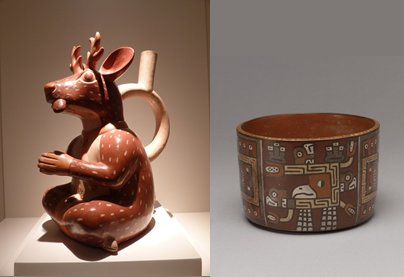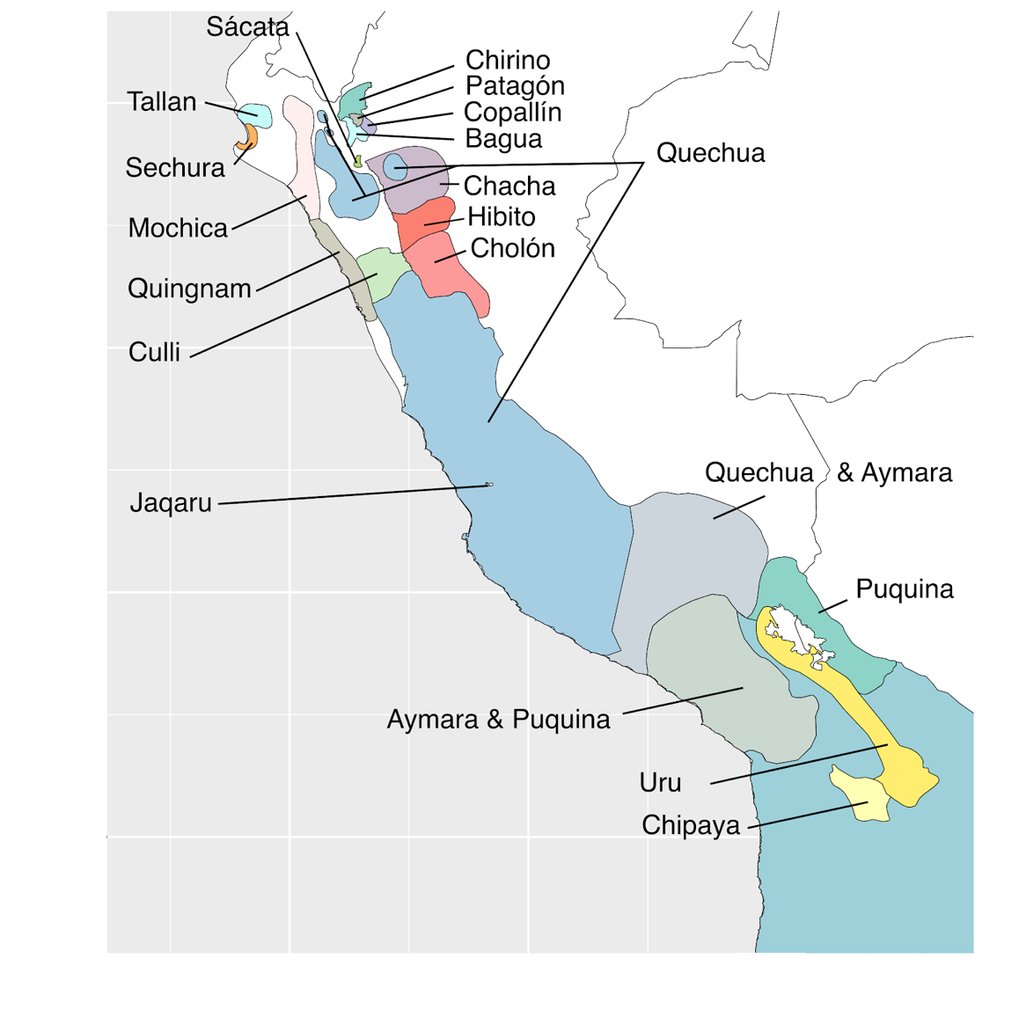A recent study combines newly available analyses and methods from linguistics and genetics to tackle a long-standing topic in archaeological research, confirming the demographic and cultural elements of a north-south divide in the Central Andes.

From the earliest signs of societal complexity on the central coast of Peru to the Inca Empire that would eventually blanket the region, the Central Andes were home to many distinct cultures and societies. Archaeologists have recognized two hotspots of cultural development: one maritime oriented area on the north coast of Peru, and a more agricultural or pastoralist region in the highlands of southern Peru and the Titicaca basin. The two regions are identified through their architecture, cultural themes and art, which persist through time in the archaeological record. Missing from the picture, however, is an understanding of how the people of these regions were related to each other and the extent of exchange that took place across the cultural divide.
A joint venture between the Max Planck Institute for the Science of Human History, the Center for Advanced Studies “Words, Bones, Genes, Tools” at the University of Tübingen, and the University of Zurich adds new evidence from genetic analysis and linguistic surveys to the existing archaeological record. The findings, published in the Journal of Anthropological Archaeology, show a correlation between genes, language and culture on both sides of this long-standing divide. The results add to ongoing discussions of how demographic history, language diversity and cultural development are interrelated.
New data clarifies old questions
With many common words and shared grammatical structures attesting to continued interaction between speakers, Quechua and Aymara are still widely spoken in the Central Andes today, especially in the south. The diverse languages once spoken in northern Peru, by contrast, are largely extinct and poorly documented.

“Extracting some idea of what these languages were like from the sources was a challenging puzzle,” says first author Matthias Urban of the Center for Advanced Studies “Words, Bones, Genes, Tools” at the University of Tübingen.
Using colonial grammars, wordlists, linguistic material enshrined in chronicles or ethnohistorical documents, and analyzing place names that derive from the now extinct languages, Urban could show that the northern languages also shared some common words and structures, with substantial differences to Quechuan and Aymaran languages.
For instance, words in Quechua and Aymara tend to end with vowels. In Aymara, counting from ‘one’ to ‘three’ sounds like maya, paya, kimsa; but in the Mochica language of the northern coast, in which many words end in consonants prohibited in Quechua and Aymara, the same procedure may have sounded sound like onäk, atput, sopät.
New genomic samples from underrepresented regions of northern Peru provide further evidence of these distinct cultural zones. In her studies, geneticist Chiara Barbieri of the University of Zurich and the Max Planck Institute for the Science of Human History has shown distinct demographic profiles in the north and south with relative continuity through the centuries, as confirmed by ancient DNA.
“When I saw the results of Dr. Barbieri’s work for the first time, I knew that the pattern we could see independently in three disciplines that explore prehistory was important,” says Urban.
“In this work, we focused on the level of population diversity, contact and structure, and checked where contacts and divides would correspond with the genetic, linguistic and archaeological points of view,” explains Barbieri.
An important finding from ancient and modern DNA is the timing of the divergence of the two genetic pools, which would have been earlier than 2000 years ago.
“Genetic data can clarify conflicting hypotheses from the archaeological side,” Barbieri explains further. “The demographic structure apparently predates the formation of cultural identities in this region, characterized by strong population continuity through the centuries. This concept is very interesting because it suggests that sometimes cultural structure is not the primary drive of population structure, but also the opposite case is possible.”
In addition to the necessity of interdisciplinary research, this paper also shows a unique approach to the use of linguistics in examinations of the remote past.
“Linguists who are interested in prehistory are typically interested in explaining the origin of language families. Here, we see that linguistic data can contribute meaningfully in other ways to an interdisciplinary dialogue,” says Urban.
“By working with multidisciplinary approaches and incorporating new data and methods, we can add details to illuminate chapters of our past,” concludes Barbieri. “This is particularly exciting for South America, where the rich cultural heritage is overshadowed by a colonial narrative and the lack of direct written historical documentation.”








